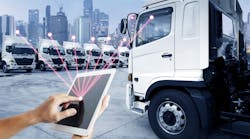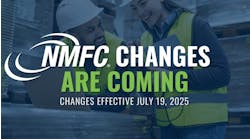I always have been a proponent of establishing an asset replacement cycle that allows for changes due to outside market influencers. Minor modifications always will need to be made, but a carefully researched and executed asset replacement plan leads to the best total cost of operation for a fleet.
The rapid pace of technological developments is one of the reasons I advocate for a steady, measured asset replacement strategy. Most technological developments for trucks today fall into one of two buckets: they improve fuel efficiency, or they improve safety.
Both are relatively easy to factor into a return on investment calculation. What is a little trickier to calculate is the impact investments in newer vehicles or technology has on your drivers.
Throughout the COVID-19 pandemic, we’ve heard drivers described as heroes. It’s been a long time since the spotlight has been turned on drivers and the important role they play in the economy. It almost reminds me of the “good old days” of the 1960s and 1970s when truckers were seen as the knights of the highway.
My point here is that when you are making decisions about investing in newer vehicles or adding new technology to trucks already in your fleet, think about your drivers. While it may be difficult to put a dollar amount on their appreciation for the investments you’ve made in their safety and efficiency, an investment in technology is actually an investment in your drivers.
In a recent blog, I noted that while we may think we have solved the driver shortage issue, we haven’t. When the economy strengthens, we will be right back where we were pre-COVID-19 in terms of having too few drivers to meet freight demand.
I am not saying you have to invest in every new bell and whistle that comes on the market. However, I suggest you take an in-depth look at what specifications you are evaluating for new vehicles, and make sure your fleet is updated on a consistent basis so that you are continually modernizing your trucks.
I will say it again: an investment in new truck technology is an investment in your drivers. Make sure they know you care about them and value them enough to equip them with the best tools to complete their jobs.
There is a definite ROI to reduced driver turn over, and you may be surprised to know that it is not always about the pay. Just as you take pride in your business tools and technology so do our drivers.
_____________________________________
Patrick Gaskins, senior vice president of Corcentric Fleet Solutions, oversees both sales and operations for Corcentric’s fleet offerings. Over the past 10 years, Gaskins has grown the fleet services area of Corcentric’s business by implementing a best-in-class asset management database and a data-driven approach to providing Corcentric clients with visibility into all areas of their fleet spend. He joined Corcentric in 2010, bringing over 30 years of experience as a financial services professional in the transportation industry. Gaskins leads a team of industry experts who work with a supply base of over 160 manufacturers to help the country’s largest fleets manage all aspects of their fleet operations and fleet related spend.
Gakins earned his BBA in Finance from the University of Miami, FL, and his CTP certification from the National Private Truck Council.




